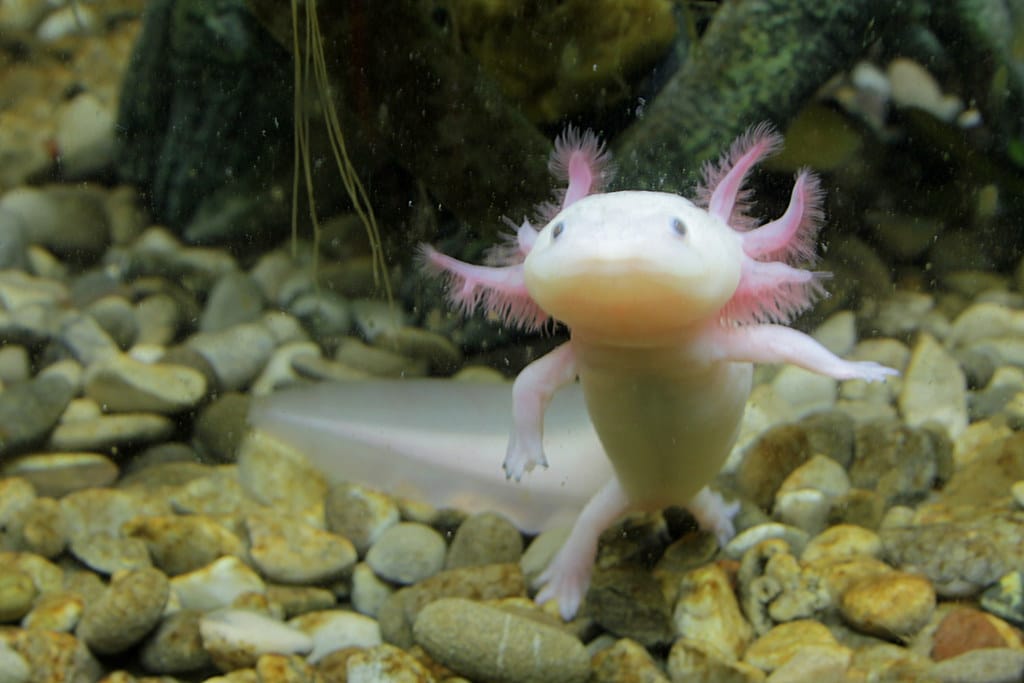Axolotl Breakthrough: Scientists Unlock the Secret to Perfect Limb Regeneration
Scientists have made a groundbreaking discovery that could revolutionize human medicine, identifying the key mechanism that allows axolotls to perfectly regrow entire limbs. This breakthrough brings us closer than ever to developing regenerative therapies that could restore lost limbs in humans, offering hope to millions of amputees worldwide.
The Axolotl's Remarkable Superpower
The Mexican axolotl (Ambystoma mexicanum) has long fascinated researchers for its extraordinary ability to regenerate entire limbs, spinal cord segments, and even parts of its heart and brain. Unlike humans, who form permanent scars when injured, axolotls can perfectly restore complex body parts complete with bones, muscles, nerves, and blood vessels.
Recent research published in Nature has finally identified the molecular switches that control this remarkable process. Scientists at the Institute for Regenerative Medicine discovered that axolotls possess a unique combination of stem cell activation pathways and inflammation control mechanisms that work in perfect harmony during regeneration.
The Key Discovery: Macrophages as Master Regulators
The breakthrough centers on specialized immune cells called macrophages, which play a crucial role in the axolotl's regenerative process. While human macrophages typically promote healing through scar formation, axolotl macrophages behave differently – they actively promote the formation of a regenerative structure called a blastema.
Dr. Sarah Chen, lead researcher on the study, explains: "We found that axolotl macrophages secrete a specific cocktail of growth factors and signaling molecules that essentially tell the surrounding tissue to 'remember' what it was supposed to be and rebuild accordingly."
The research team identified three critical factors:
- Enhanced stem cell mobilization: Axolotl macrophages recruit 10 times more stem cells to injury sites than human macrophages
- Inflammation resolution: The inflammatory response is precisely controlled and resolved within 48 hours
- Metabolic reprogramming: Cells switch to a high-energy state that supports rapid growth and differentiation
Human Applications on the Horizon
This discovery has immediate implications for human regenerative medicine. Current estimates suggest that over 2 million people in the United States live with limb loss, with 185,000 new amputations occurring annually. The potential market for regenerative limb therapies is projected to reach $8.9 billion by 2030.
Several biotechnology companies are already developing therapies based on these findings:
Regenerative Therapeutics Inc. has begun Phase I trials of a macrophage-based therapy that attempts to recreate the axolotl's regenerative environment in human tissue. Early results show promise, with patients demonstrating improved nerve regeneration and reduced scar tissue formation.
BioLimb Corporation is developing a biodegradable scaffold that can be seeded with reprogrammed macrophages and stem cells, potentially allowing for the regrowth of entire limb segments.
The Science Behind the Magic
The axolotl's regenerative process follows a precise timeline that researchers have now mapped in detail:
- 0-24 hours: Injury triggers controlled inflammation and wound closure
- 24-72 hours: Specialized macrophages arrive and begin recruiting stem cells
- 3-7 days: Blastema formation begins as cells dedifferentiate and multiply
- 2-8 weeks: Organized regrowth occurs, with proper tissue patterning
- 8-12 weeks: Full functional restoration is achieved
Understanding this timeline has allowed scientists to identify critical intervention points where human healing could potentially be redirected from scarring to regeneration.
Challenges and Realistic Timelines
Despite the excitement surrounding this discovery, significant challenges remain. Human biology is far more complex than that of axolotls, and our evolved immune responses are designed to prioritize survival over perfect healing.
Dr. Michael Rodriguez, a regenerative medicine expert at Johns Hopkins, notes: "We're essentially trying to reprogram millions of years of human evolution. While the axolotl discoveries are incredibly promising, we need to be realistic about timelines. We're looking at 10-15 years before we see meaningful clinical applications."
Current research focuses on developing localized treatments that could enhance healing in specific tissues, rather than attempting full limb regeneration immediately.
A Future of Restored Possibilities
The axolotl's gift to humanity may ultimately be the restoration of what was once thought permanently lost. As research continues and clinical trials progress, we edge closer to a future where limb loss need not be a permanent condition.
This breakthrough represents more than scientific achievement – it offers hope to millions and demonstrates how nature's solutions can inspire revolutionary medical advances. The humble axolotl may well become the key to unlocking humanity's own regenerative potential.
